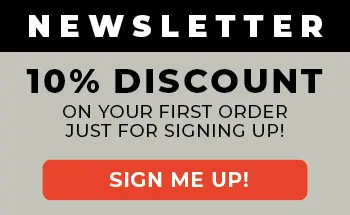In order to cultivate any cannabis plant, you need two things – light and water. Given these two essential elements any plant will fulfil its obligation to a natural life cycle and grow! However, there is a big difference between a cannabis plant that ‘just’ grows and one that fulfils its true potential. In order to maximize the harvest yield you need to maximize how cannabis plants use light.
One of the biggest mistakes that those new to growing will make is to underestimate the importance of lighting in relation to how cannabis plants use light. Those who grow outdoor cannabis plants in more northern regions, where the hours of sunlight are less and the weather is more changeable, will tell you what a difference a ‘sunny’ or ‘rainy’ season will have on their crops. Aside from other problems associated with wet weather, such as mold, the lack of sustained direct sunlight will have an impact on buds, restricting size and even delaying ripening time.
Photosynthetically Active Radiation (more commonly known as PAR) helps us to understand how cannabis plants utilize light. It refers to the parts of the light spectrum (ie colors) which promote maximum chlorophyll production. The human eye sees light spectrum in a very different way to plants – focusing on the central portion of the spectrum, while cannabis plants use a wider range of the spectrum, which helps to give an insight into how cannabis plants use light. If the human eye observes sunlight through a prism, then this full spectrum of colors becomes evident – as well as the white light we see, there other colors include violet blue, green, yellow, orange and red.
Growing Indoor: How Cannabis plants use light
While the sun provides this full light spectrum, in the grow room we are relying on lights to provide an artificial source of sunlight. Tapping into the spectrum – with the plant gaining different aspects of growth from different colored light – is why LED lights have become so popular amongst the cannabis growing community in recent years (see our article Best Grow Lights 2021: LED vs HPS Comparison.
Growing indoor with LED vs HPS
That is not to say that HPS lights do not provide sufficient light for impressive yields. However, how HPS lights are used can have dramatic effects on the crop and the harvest potential. A common assumption by growers is that the more powerful the bulb, the better, however this is not necessarily the case as a crucial factor in growing a crop is efficiency in light distribution.
One bulb kicking out 1000 watts of light is not as effective as using two or three smaller lights (400 watts for example), which can be positioned to increase the exposure to the growing area, which will inevitably contribute to how cannabis plants use light. At the same time the lower heat intensity means that the lights can be hung closer to the plants without the risk of causing heat damage.
Growing Cannabis Light Issues
More often than not issues pertaining to under performing plants are related to growing environments and conidtions, rather than an issue with the seeds themselves. Cannabis seeds are bred with the genetic substance to thrive, and these genetics (in quality seeds from a reliable source) are homogenous. If, for example, the customer has bought a pack of Nebula or Space Cookies the potential to grow the kind of stunning plants that light up an Instagram feed is inherent!
However, these ‘showcase’ plants owe a great deal to the fact they are grown under the right conditions and as a result how the cannabis plants use light. The majority of issues are with the growing environment and the conditions the plants are grown in. A classic example of an issue such as disappointing yield is related to a simple HPS (sodium) bulb change for those growing with HPS (sodium) lights.
Cannabis growing issues resulting from bad light
One of the main causes of unimpressive plant development, illustrated by spindly branches, is low light intensity (due to the light being so far away from the tops of the plants). This is one of the advantages of using LEDs, with their fuller spectrum range and lower temperature which allows them to be positioned closer to plants than HPS lights. The closer lights are to the top of plants, the higher the light intensity and more even the spread contributes to how cannabis plants use light more effectively for healthy plant development.
Light plays a crucial role in bud development and the results of good lighting are plain to see in the form of big buds that have a real density to them. The flipside of this is buds grown under insufficient light, which will be underwhelming in appearance and lack that crucial density which adds weight and substance to the crop when it comes to harvest time.
Recognize how cannabis plants use light to grow bigger yields
So to summarize this article, in order to make the most of an indoor grow room and maximize how a cannabis plant uses light for producing bigger yields, it pays to invest in a good lighting system and – crucially – to maintain the system and replace bulbs regularly (HPS bulbs lose approximately 20% in output over a year which will be reflected in yield). Also take the time to assess your grow environment – as every grow space is different – and focus on maximizing the light intensity for best results.


